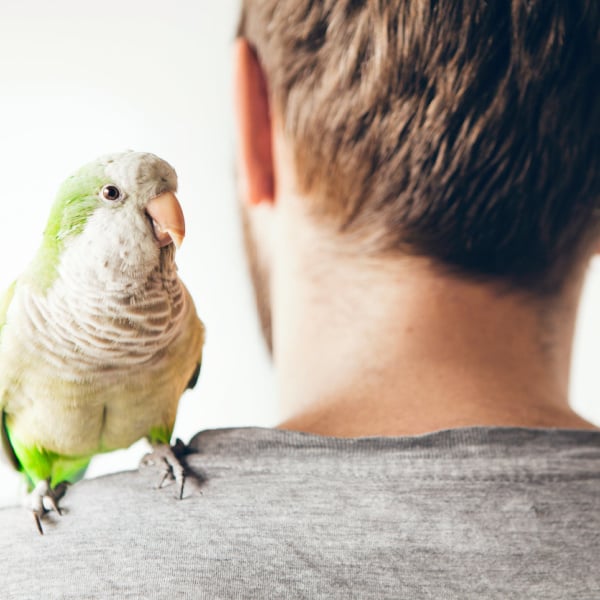4 Large And Mini Macaw Problems Solved
Janie D.
I have an almost 16-year-old Red Fronted Macaw.
(2 – Red Fronted Macaws pictured above)
I got her as a 6-month-old chick and taught her bite words “hurt” and “cry”.
She uses them accurately!
Janie D.
I have an almost 16-year-old Red Fronted Macaw.
(2 – Red Fronted Macaws pictured above)
I got her as a 6-month-old chick and taught her bite words “hurt” and “cry”.
She uses them accurately!
My severe macaw is losing all its feathers.
The vet says I should switch her to 80% pellet food.
However, I am not convinced. I don’t think they eat pellets in the wild.
I am trying adding HARI Prime vitamin, mineral, and amino acid supplement w/probiotics to her diet.
Do you think this is an acceptable alternative?
How Can I Help My Cockatiel’s Broken Wing Heal? Will it ever heal so he can fly again?
NOTE: We do not advocate being your own avian vet except for emergencies when you cannot get the care you need.
If you can see the break you can use 2 very small cable ties and a coffee stir stick or cocktail straw as a splint to restrain the wing then introduce the sock (below).
If it’s a fracture go straight to the sock.
Parrots we classify as Medium Large Species
Amazons
Blue-fronted Amazon – Cuban Amazon – Double Yellow-headed – Amazon – Green-cheeked Amazon – Lilac-crowned Amazon – Mealy Amazon – Orange-winged Amazon – Red-lored Amazon – Spectacled Amazon – Tres Marias Amazon – Tucuman Amazon = Yellow-billed Amazon – Yellow-naped Amazon – Yellow-shouldered Amazon – Vinaceous Amazon (more…)

An oft asked question by caged bird keepers is “how do I give my bird powdered supplements”?
Pet bird supplement manufacturers are very good at letting us know what is in the supplements and providing us with precise dosages based upon the size of the bird.
What they never tell us is how to get the supplements IN the bird.
Hi Mitch. Just a comment of concern.
Clearly, I understand the need to know a bird’s sex but I’m also very concerned about this kit that anybody can buy, including many of the idiots out there that own birds.
Editors note: not my words
Do you really want to encourage all owners to pluck their birds feathers and cut their nails too short in order to get blood for testing?
There are experienced owners out there that could do it but there are probably many more out there who could cause an emergency and pain.
I have lived with 17 budgies but I would would still go to a vet for something like that.
I wish you would write a follow up to that article to inspire caution. The article makes me very nervous frankly.
So we were about to leave the Birdie Boutique the other night. Five minutes before close and we get a call.
Find the Birdy IQ exam here if you haven’t taken it
Of the first 170 exams we had a 25% pass with 75% correct answers to 44 multiple and true/false questions
Please share your comments below terms if you think this helped or did not.
What else would you like to see?
more questions and/or explanations to the answers.
Please comment below
So you have a bird in your home. What could possibly go wrong? A bird whose feathers have been stuck to an adhesive surface is a panicked and stressed bird.…
We offer USDA certified organic bird food pellets from Harrison’s.
It’s refuted as one of the best bird foods on the market.
We also offer Totally Organics, another fine organic blend.
The biggest misconception about organic is its purity. The majority of people assume organic means fully natural and pesticide-free but this is not close to the truth.